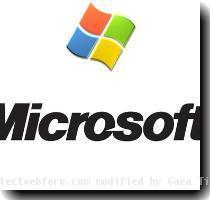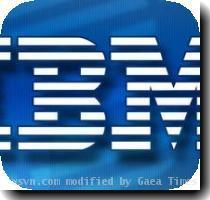Patent case before Supreme Court could have major implications for software
By Joelle Tessler, APSaturday, November 7, 2009
Software cos. eye key patent case in Supreme Court
WASHINGTON — With the technology industry looking on, the Supreme Court on Monday will explore what types of inventions should be eligible for a patent in a pivotal case that could undermine such legal protections for software.
A ruling that sides with the Patent Office could bar patents on processes and methods of doing business, such as online shopping techniques, medical diagnostic tests and procedures for executing trades on Wall Street. And it might even undercut patents on software.
In a worst-case scenario for the high-tech industry, the ruling could invalidate many existing software patents or at least make them more difficult to defend in lawsuits. And it could make such patents harder to obtain in the future because software is generally patented as a process for doing something rather than as a physical invention.
“Technology companies care about this case because it will define what you can and cannot get a patent on,” said Emery Simon, counselor to the Business Software Alliance, which represents large technology companies including Microsoft Corp. and Intel Corp. “The scope of patentability could have ramifications for the path that technology takes.”
It’s impossible to know what products might never have come to market without patent protection for software. But tech companies say these patents have played a critical role in keeping the U.S. at the cutting edge by giving people control over their inventions for nearly 20 years.
“The software industry would lose an important incentive to innovate if the government ceased issuing software patents,” warned patent attorney James Carmichael, a former judge on the Patent Office board of appeals.
Although technology companies insist they’ll keep innovating no matter how the high court rules, an unfavorable outcome might force them to write patent applications in a different way or rely more on copyright and trade secret protections. And it might even draw Congress into the debate.
The facts of the case are not about software.
The roots of the dispute go back to 1997, when inventors Bernard Bilski and Rand Warsaw tried to patent a method of hedging weather-related risk in energy prices. That process, which powers energy billing services offered by a Pittsburgh company called WeatherWise USA, can be used to lock in energy prices, even during an unusually cold winter.
The Patent Office concluded the process was too abstract and denied the application. So Bilski and Warsaw took their claim the U.S. Court of Appeals for the Federal Circuit, which upheld the Patent Office decision last year and said a process is eligible for a patent only if it is “tied to a particular machine or apparatus” or if it “transforms a particular article into a different state or thing.”
The Bilski filing, the court found, did not meet the test.
Now, the question facing the Supreme Court is whether that “machine-or-transformation” test is the right standard.
The answer should settle a long-running debate over whether business methods should be eligible for patents.
Some of the best-known business-method patents in technology come out of electronic commerce, including Amazon.com Inc.’s “1-Click” tool for completing online purchases and Priceline.com Inc.’s “Name Your Own Price” model. Yet many big companies, particularly in technology and financial services, argue that such patents are too broad and too often used as weapons in costly infringement lawsuits to extract licensing fees.
Technology companies, meanwhile, are watching the Bilski case for another reason: If the Supreme Court upholds the machine-or-transformation test, one of their fundamental assets — software — might no longer qualify.
The number of software patents has been climbing sharply in recent years — a reflection of the technology industry’s explosive growth and the increased reliance on software in all industries. A series of court rulings upholding software patents in the 1990s, including a key case in 1998 that opened the floodgates to business-method patents as well, also helped drive up software patent numbers.
Not everyone agrees software patents are a good thing, though.
Rob Tiller, assistant general counsel for software company Red Hat Inc., maintains that software patents actually discourage innovation because software developers are at constant risk of infringing on existing patents. Red Hat embraces the open-source movement, which makes software code freely available for anyone to modify, improve and use and is fundamentally at odds with software patents.
As the justices sort through these issues, they will have to determine how to draw the line between theoretical ideas not connected to the real world and concrete applications that put those ideas into practice.
The Supreme Court has already established that abstract ideas, natural phenomena and laws of nature cannot be patented. But there is still plenty of disagreement over what qualifies.
The same appeals court that ruled in the Bilski case had reached one conclusion when it upheld business method and software patents in the 1990s, saying that any invention that produces a “useful, concrete and tangible result” can qualify. The machine-or-transformation test arrives at a very different understanding.
Michael Jakes, a patent lawyer representing Bilski and Warsaw before the Supreme Court, argues that the new test is too restrictive and would exclude too many innovations — including software — in today’s service-based, information-age economy.
“The test may have made sense for industrial processes such as curing rubber or tanning leather,” Jakes said. “But with today’s technology, we have processes that don’t fit these categories. But they are still practical and useful and innovative and important.”
At this point, there is no firm consensus on what the test for patentability should be. IBM Corp. says an invention should be eligible if it makes a “technological contribution.” Microsoft says an invention should be eligible if it has physical properties or produces a result in the physical world.
Under both tests, the companies say, software would make the cut and the Bilski risk-hedging application would not.
Indeed, Horacio Gutierrez, deputy general counsel for Microsoft, said the Supreme Court would actually help the technology industry by blocking a patent in this case — sending a strong signal that the government must hold patent applications to high standards.
Whatever test the Supreme Court ultimately settles on, IBM attorney Marian Underweiser hopes it will be flexible and broad.
“The danger is that if the test is too narrow and too specific,” she said, “it won’t stand the test of time because technology moves so quickly.”
Tags: Computing And Information Technology, Corporate Crime, Eastern Europe, Europe, Health Care Industry, Materials, North America, Poland, Products And Services, Software, Technology Issues, Technology Law And Ethics, United States, Warsaw, Washington
|
November 9, 2009: 10:46 am
The problem with the Government’s brief in this case is that Bilski is clearly related to technology. It is about level billing for commodities using Monte Carlo simulations to predict the future prices for commodities. The level billing is about information and information is the most important area technology in the modern economy. The Bilski case is about formalism over logic. If Bilski had just recited a computer system this case would not exist. However it is clear that Bilski has to be implemented on a computer to have any commercial value. For more information see hallingblog.com/2009/06/08/bilski-software-patents-and-business-method-patents/ |
|
November 7, 2009: 7:51 pm
You have to see this. This guy John wins 97% of his NBA & MLB sports bets. Lives in Vegas, claims he makes $70,00 a week, has proof. lasvegassportsodds.biz |


Dale B. Halling